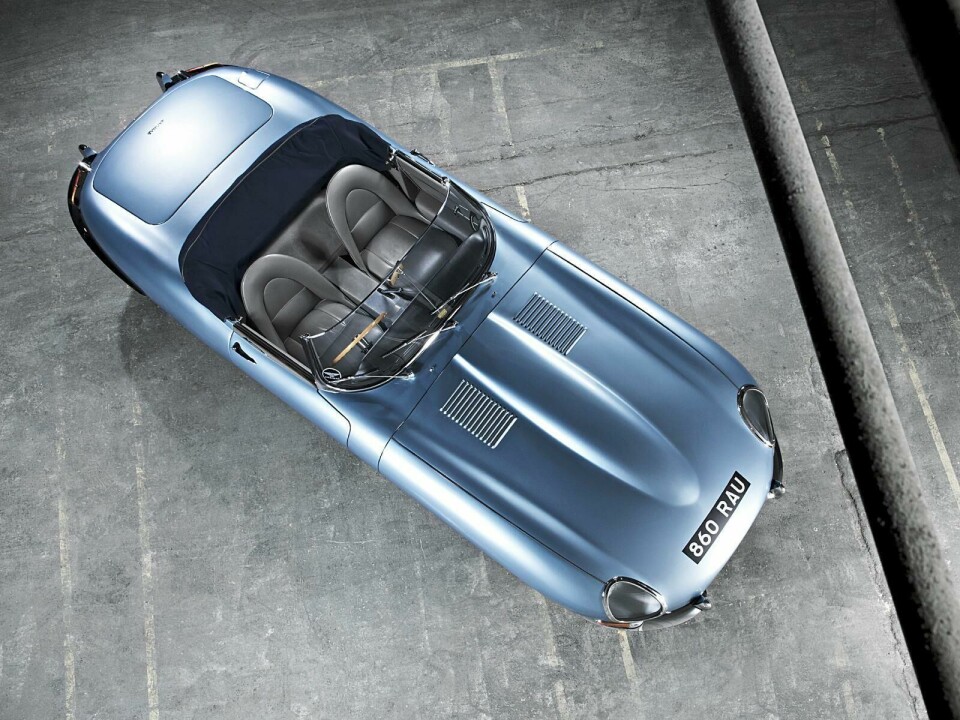
Jaguar E-Type Celebrates 50th Anniversary
The Jaguar E-Type turned 50 this year and the marque is honouring its most iconic production car with a host of events around the world







The Jaguar E-Type turned 50 this year and the marque is honoring its most iconic production car with a host of events around the world.
In February, its design was celebrated with an exhibition at London’s Design Museum where it sat fittingly amongst some of the most celebrated contributions to 20th-century design. And on the eve of the 2011 Geneva Motor Show a more emotive event focused on the car’s symbolic status as one of the icons of the swinging 60s.






The E-Type caused a sensation when it was first unveiled in March 1961 at the same event. The story goes that there was so much uproar surrounding its launch that Jaguar founder Sir William Lyons instructed his chief test driver Norman Dewis to drive an additional model through the night from Coventry to Geneva in time for the show.
Fast-forward to the present day and emotions ran deep as the 1961 test route was relived. This involved a rather brief drive from the Parc des Eaux Vives up a nearby hill climb and short spin around Lake Geneva - a tame affair compared to today’s vigorous test routes.
Jaguar had collected a range of E-Types coupés and convertibles in various shades and from the three production series. Some came from the heritage museum, but the majority of the cars that day were privately owned, their owners’ stories lending a touching human narrative to the occasion.
One driver had purchased his 1968 white convertible in the US and painstakingly re-engineering it for UK driving. A few times a year, with his wife, he drives their cherished car across the waters to France - squeezing their luggage under the passenger seat and brazenly braving the blustering wind.
Another had purchased his blue 1971 Series II soft top in remembrance of an era long gone. He too had worked hard to restore the car, each and every detail returned to its original shape, upholstering the seats in soft old leather so as to recapture the original feel and smell.
That night the nostalgic theme ended with Norman Dewis, now 90, painting a vivid picture of his drive that night from the manufacturing base. He had reached the Channel a little after the last ship had sailed off, but on seeing the car, the crew had been so overwhelmed that they volunteered to ship him over.
The design
The E-Type’s success lay in its combination of striking design, sporty driving dynamics - it could reach 150mph - and at around £2,000, very competitive pricing. This was a sports car for the hip youth of the 1960s. Brigitte Bardot, Tony Curtis, Steve McQueen and George Harrison, amongst many, owned one. Over 70,000 E-Types were sold worldwide until it ceased production in 1974.
“You can’t overstate the impact the E-Type had back then,” enthuses Jaguar design director Ian Callum. “It completely encapsulated the spirit of the revolutionary era it came to symbolize.”
Back in Scotland, Callum, age six, spotted a picture of a white E-Type on the back page of Life magazine. “It just looked so modern. I couldn’t stop looking at it. I asked my father what this car was and he told me it’s the new Jaguar.”
Callum admits though that the car didn’t necessarily drive him to automobile design - he always knew this was his calling - but that he was without a doubt drawn to it. “You have to remember the car was not just good looking, it was also an accessible sports car and so much cheaper than the Mercedes’ of the time.”
With its graceful sculpture that almost guides the eye seamlessly across and around its silhouette, and long lascivious hood, the car was considered, in the words of Enzo Ferrari, “the most beautiful car in the world”.



